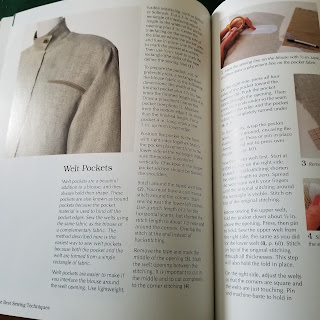 |
| Miss Patch's Learn to Sew Book / Carolyn Meyer Boston : Houghton Mifflin Harcourt, 2014, c1969. 90 p. |
This was a cute reprint I found via my library -- it's a simple sewing book aimed at children, 8+ probably. It's quirky, with amusing illustrations and projects that are not too challenging but not too simple either. Note that it was first published in 1969, so there is the assumption that it is little girls reading this and wanting to sew cute things for others. And that those who will help them are mothers, older sisters and aunts. It is a bit noticeable reading it 54 years into the future.
However, this was entertaining overall, and I found the nostalgic charm appealing -- this is a book I would have been reading in the 70s as a small child and I know I would have liked it then. The sewing information is surprisingly clear and no worries about younger sewists using needles and scissors and irons (although they do suggest adult help when ironing, at least). I think it would still be an easy way to learn some handsewing basics, but of course things have changed quite a bit in the sewing world in terms of easy to use machines etc. over the past 50 years!
It instructs readers on how to gather the needed sewing equipment, how to handsew a seam, with projects like pillows, bags, or some small patchwork and moves on to an apron and easy clothes. It follows the experiences of (slightly ditzy) Miss Patch and her dog Charlie, as Miss Patch learns to sew -- making being a beginner at any age quite normal! The narrative tone is definitely aimed at young girls, but it's not condescending. It sounds very much of its time, but much of it does hold up, and the humour of Miss Patch and Charlie learning and correcting mistakes and so forth makes it an accessible, non-intimidating book for beginners. A really charming visit back to the books of my youth ;)

















































